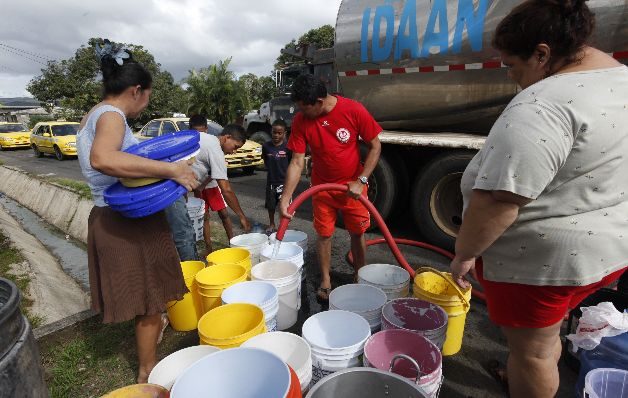Panama economy grows in parallel to inequality
- Miriam Lasso (miriam.lasso@epasa.com)
- /
- @mlasso12
With superior to the rest of Latin America economic growth, the level of inequality in Panama remains relatively high, according to the ranking of inequality World Bank (WB)...

According to the World Bank, 25% of the Panamanian population has no health services 5% lack drinking water, and 11% suffer from malnutrition. / Files
With superior to the rest of Latin America economic growth, the level of inequality in Panama remains relatively high, according to the ranking of inequality World Bank (WB).
Country inequality, measured by the Gini coefficient reaches a level of 51.7, placing it in 10th position worldwide and fifth in Latin America among the most unequal countries.
For experts, this is mainly due to the concentration of wealth and lack of development zones within the Republic, which allow a multiplier effect of these benefits.
According to the World Bank, 25% of the Panamanian population has no health services 5% lack drinking water, 11% suffer from malnutrition and 11% live in houses with dirt floors.
This, even though, according to official figures, the Panamanian economy grew in 2015 by 5.8%.
Thus, the gross domestic product (GDP) recorded 35 thousand 731 million 600 thousand dollars, public investment would represent $ 10 million 754,000 per person, according to the last census of population and housing (3 million 322 000 576 population).
For the economist Rolando Gordón, both income and assets granted by the state have poor distribution in the country.
Gordon argues that there is now a concentration in the capital and an abandonment of other regions.
This also reflects the employment figure, where 70.1% of the employed population is concentrated in urban areas and only 29.9% in rural and indigenous.
Meanwhile, the overall unemployment rate rose from 5.1% to 4.8% in 2015.
It argues that there is a lack of diversification of the economy, which is primarily focused on financial services and the Panama Canal, where most of the profit goes abroad.
"We have a great generation of wealth that does not pass the bridge of the Americas," he said.
To this, add the economist, the lack of government policies aimed at poverty through subsidies cover and leaving aside the ease of growth and productive development of the population.
In this match the sociologist Roberto Pinnock, who believes that inequality in wages and basic services may be higher.
He said the aid subsidies poverty levels drop, but do not create conditions to integrate into society in a productive way.
It states that "an education system with more than two types of education, a good (private) education for a small group and a mediocre system (public) for the rest of the population" also influences the levels of inequality.
On subsidies, he argues that measures applied are responding to political interests, without tangible results.
The estimated public investment through 2019 includes $ 19,500 million, $ 4 billion annually, where 54%, about $10 billion 700 million will go to social projects, such as health and water.



Para comentar debes registrarte y completar los datos generales.